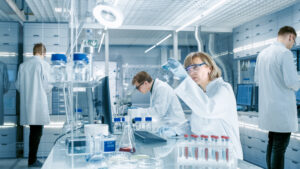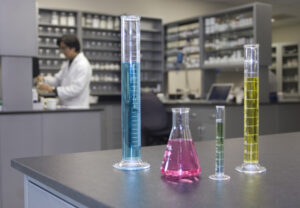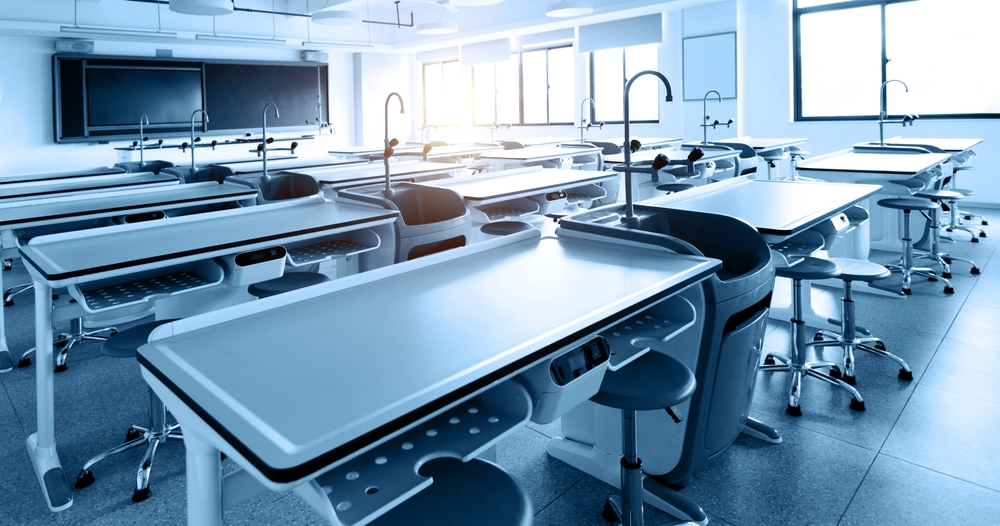
In the changing world of education, teaching styles must create learning environments that are engaging and interactive. This will help students prepare for the challenges of the future. One part of this pedagogical evolution is the creation of interactive learning spaces, where theory meets hands-on experience. Among the key contributors to this transformation are school science lab tables.
These tables are a place where students can explore, experiment, and learn together. They give students a way to connect classroom theory with practical application. In this article, we delve into the myriad benefits and considerations surrounding the integration of school science lab tables in educational settings, exploring how these spaces have profoundly changed the way science is taught and learned. Additionally, we will also discuss the criteria for selecting school science lab tables.
The Benefits of Creating Interactive Learning Spaces with School Science Lab Tables
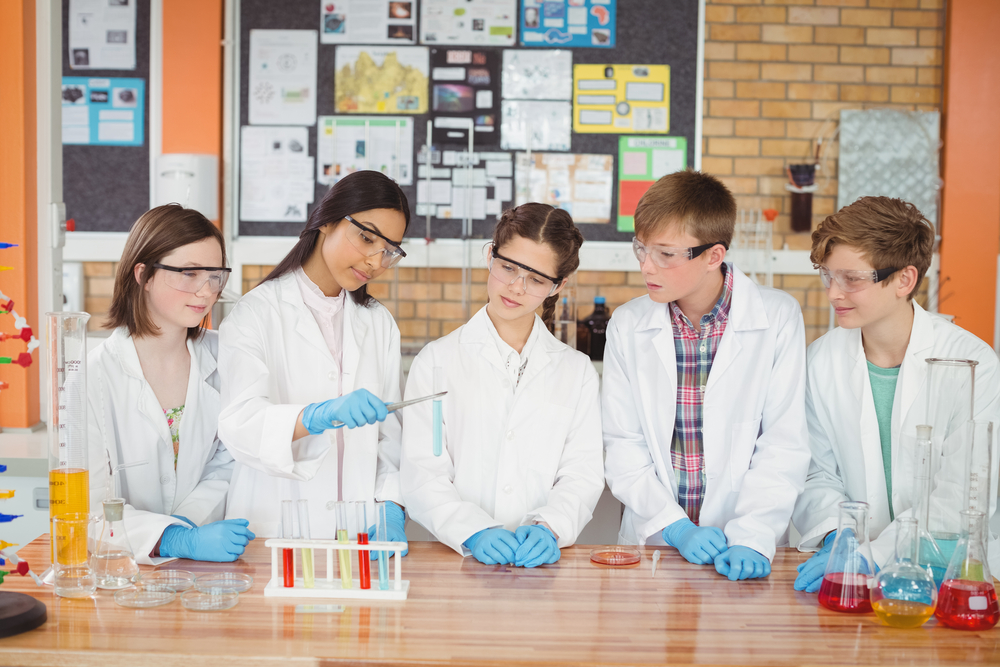
Creating interactive learning spaces with school science lab tables can offer various benefits to students and educators. Here are some advantages of incorporating interactive learning spaces with science lab tables in schools:
1. Experiential Learning
Lab tables allow students to actively engage with materials, equipment, and experiments. This hands-on learning experience improves their understanding of concepts and fosters a deeper level of learning.
Science lab tables provide a physical environment for hands-on experimentation and practical learning. Activities that involve observation, measurement, and experimentation allow students to gain a more in-depth understanding of scientific concepts through direct experience.
2. Promotes Critical Thinking and Problem-Solving
Interactive learning spaces encourage students to think critically and analytically and solve problems in real-time. Through activities like exploration and experimentation on lab tables, students can learn how to solve problems and apply theoretical knowledge and scientific principles in real-world situations.
3. Encourages Exploration and Curiosity
Lab tables create an environment where students can explore scientific concepts in a hands-on manner. The tactile nature of experiments on school science lab tables stimulates curiosity and more in-depth interest in science.
Collaborative group projects among students at lab tables offer the opportunity to share ideas, ask questions, and learn from each other’s perspectives. This interaction fosters a more dynamic learning environment where students can collectively explore concepts and solve problems.
4. Enhances Team Collaboration
School science lab tables are designed to accommodate large- and small-group work and enhance collaboration among students. Students learn to communicate effectively, share responsibilities, and collectively work towards achieving common goals.
Working together on experiments promotes teamwork, communication, and the exchange of ideas, which are essential skills in both scientific and professional environments.
5. Application of Theoretical Knowledge
Lab tables allow students to apply theoretical knowledge gained in the traditional classroom environment to practical situations. This application-oriented approach helps bridge the gap between theory and real-world applications, reinforcing understanding and retention of scientific concepts.
6. Develops Laboratory Skills
Using specialized lab equipment on school science lab tables helps students develop essential laboratory skills. This includes observation, proper handling of scientific instruments, accurate measurement techniques, technical skills, and adherence to safety protocols—skills that are valuable in both academic and professional careers they may pursue.
7. Prepares for STEM Careers
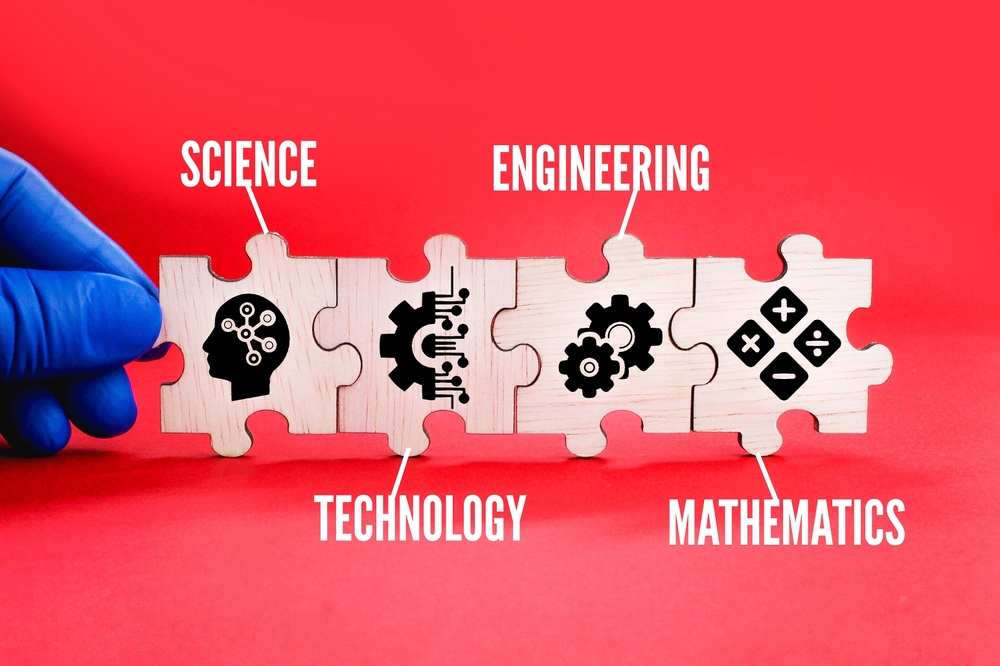
Interactive learning spaces, equipped with science lab tables, contribute to the preparation of students for careers in science, technology, engineering, and mathematics (STEM). The practical experience gained in these spaces is invaluable for those considering future professions in scientific fields.
8. Facilitates Inquiry-Based Learning
Lab tables support an inquiry-based learning approach, where students actively explore and investigate scientific phenomena. This method encourages a deeper understanding of concepts, as students formulate hypotheses, design experiments, and draw conclusions based on their observations.
9. Increases Engagement
Hands-on learning activities on school science lab tables make learning more engaging and memorable than passive forms of education. The interactive nature of experiments captures the interest and enthusiasm of the whole class, making science more enjoyable and inspiring a lifelong love for learning.
10. Retention of Information
The combination of hands-on experiences and active participation in experiments improves the retention of information. Students are more likely to remember concepts and theories when they have physically interacted with the subject matter and had the opportunity to discuss it with other students and the teacher.
11. Real-World Application
Lab activities often simulate real-world scenarios, providing students with practical insights into the application of their knowledge. This connection to real-world applications can motivate students and demonstrate the relevance of their studies.
12. Aligns with Modern Teaching Strategies
Interactive learning spaces are in line with modern teaching strategies that focus on student-centered and active learning approaches. Spaces like school science labs cater to diverse learning styles, accommodating students who learn best through practical application and experimentation.
In summary, creating interactive learning spaces with school science lab tables promotes active, hands-on student learning, encourages collaboration and brainstorming, and prepares students for the challenges of the modern world, particularly in STEM-related fields.
Versatile Lab Tables for Effective Laboratory Experiences in Classrooms
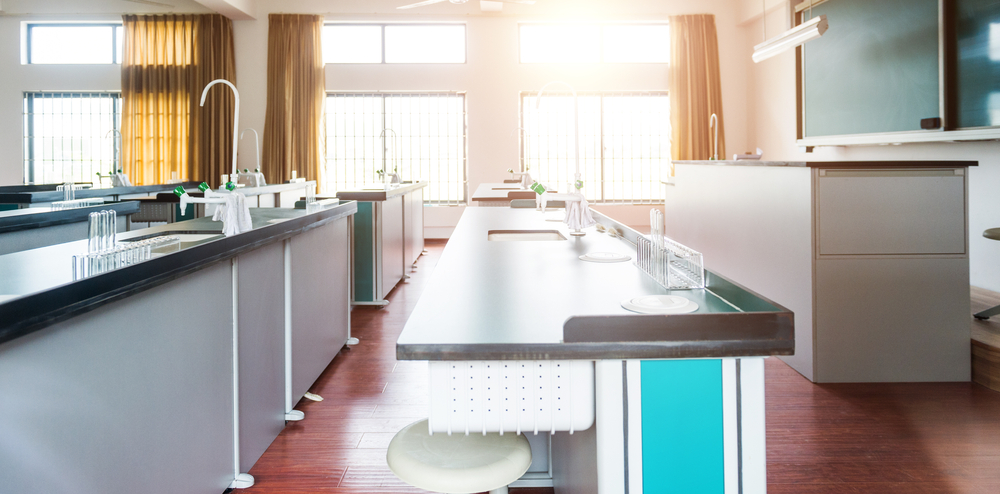
Selecting versatile lab tables and workstations for effective laboratory experiences in science classroom settings involves considering various criteria to ensure that the chosen tables meet the specific needs of the learning environment.
Here are key criteria to consider when sourcing versatile school science lab tables:
- Durability and Construction
Choose lab tables made of durable materials that can withstand the rigors of a laboratory environment. Common materials include chemical-resistant laminate, epoxy resin, powder-coated steel, or stainless steel. The frame should be sturdy and resistant to corrosion. Powder-coated steel tables and frames are often preferred for their durability because powder coating enhances the steel’s properties by adding a protective layer that helps prevent rust and other forms of corrosion.
- Chemical Resistance
School science lab tables should be resistant to chemicals. This is because laboratories typically involve the use of various chemicals for experiments and research, and accidental spills or splashes are common. Chemical-resistant lab tables are designed to withstand exposure to a wide range of chemicals without being damaged or corroded. These tables are typically made from materials such as high-pressure laminate, epoxy resin, or other chemically resistant materials.
- Adjustability and Flexibility
Investing in adjustable school science lab tables is a cost-effective choice for educational institutions. Adjustable legs or electrically adjustable tables can provide flexibility in meeting various classroom needs. These tables can be used over several grade levels, from elementary to high school, adapting to the changing needs of students as they progress through different stages of their education.
- Mobility
Consider tables with wheels or casters for easy mobility. This allows for moveable tables to reconfigure the classroom layout to accommodate different experiments or rearrange the workspace for different collaborative learning activities.
- User-Friendly Design
Consider the design of the lab tables to ensure they are user-friendly for students and educators. This includes considerations such as ergonomics and accessibility.
- Work Surface Features
Choose school science lab tables with smooth, non-porous surfaces to resist the absorption of liquids and the harsh effects of disinfectants. This reduces the risk of contamination and ensures a safer environment for students and educators. Furthermore, select tables with safe, rounded edges to prevent injuries. Some tables come with chemical-resistant edge banding for added durability.
- Ease of Cleaning
School science lab tables should be easy to clean and maintain to ensure a hygienic and safe learning environment. Non-porous surfaces are easier to clean and disinfect, which is crucial in a laboratory setting where experiments and potentially hazardous materials are involved.
- Storage Options
Look for lab tables that offer storage solutions, such as built-in shelves or drawers. This helps keep the workspace organized and clutter-free while providing easy access to commonly used materials and equipment. Moreover, lab space is often limited, and having storage options integrated into the tables can help optimize the available space. This is especially important in science classrooms where space may be at a premium.
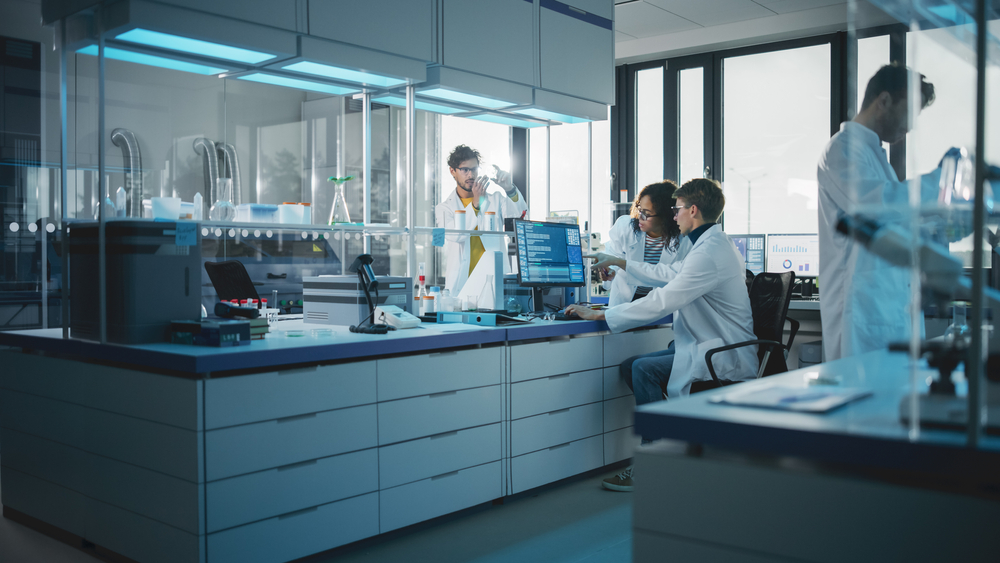
- Power and Data Integration
Consider lab tables with built-in power outlets and data ports. This facilitates the use of electronic equipment and technology during experiments. Including power outlets and data ports provide flexibility for teachers and students to adapt to changing educational technologies. It allows for the integration of new tools and devices like robotics without the need for additional infrastructure.
- Weight Capacity
The weight capacity is a significant factor to consider when choosing school science lab tables. Science lab tables are designed to support various equipment, chemicals, and experiments that students may conduct in a laboratory setting. The weight capacity of the tables should be sufficient to safely accommodate the tools, apparatus, and materials used in science experiments.
- Safety Features
Ensure that the lab tables meet school district and state or federal safety standards for school science laboratory environments. This includes features such as chemical-resistant surfaces, flame-resistant materials, and compliance with relevant safety regulations.
- Cost and Budget Considerations
Balance the features and quality of lab tables with the available budget. Consider the long-term investment and the potential benefits of durable, high-quality tables.
- Manufacturer Reputation
Choose school science lab tables from accredited, reputable manufacturers with a track record of producing quality, durable, and safe laboratory furniture. Some manufacturers offer customization options for lab tables, allowing you to tailor the tables to specific classroom design and laboratory requirements and available square feet.
Conclusion
As we conclude our investigation into the incorporation of school science lab tables into the educational context, it becomes evident that these interactive learning environments serve as catalysts for a fundamental shift in the field of science education.
These tables help learners understand science better by giving them a chance to work together and use their hands. They also make them curious, think critically, and create a lifetime love for learning and exploring.
As 21st-century schools increasingly recognize the value of pedagogy as an educational theory that emphasizes the importance of science teacher and student engagement, the role of science lab tables becomes pivotal in shaping the next generation of scientists, innovators, and critical thinkers.
Whether at the elementary school, middle school, or high school level, by establishing these dynamic learning environments, we are paving the way for a future where students are not only consumers of knowledge but active participants in the scientific journey, equipped to navigate the intricate details of an ever-evolving world.

